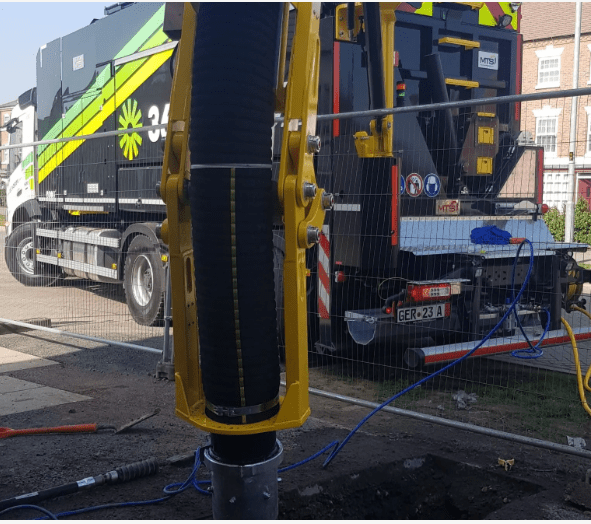Dry suction excavation is a modern, innovative method for excavating soil, debris, and other materials using a powerful vacuum system. This technique has become increasingly popular in recent years, offering several benefits over traditional excavation methods. The effectiveness of dry suction excavation depends on the project’s specific needs. For example, if the project requires excavation in rocky soil, there may be more effective methods than dry suction excavation. Similarly, if the excavation site is located in a narrow or confined space, it may be challenging to manoeuvre the vacuum system. Let’s explore the benefits of Dry Suction Excavation, how it works, and some typical applications.
How Dry Suction Excavation Works?
Dry suction excavation is also known as vacuum excavation. It uses a high-powered suction system to remove soil and other debris from a surface. The vacuum is created by a blower, which pulls air through a hose and nozzle at the excavation site. The soil is then separated from the air and collected in a tank or container. The remaining air is then filtered and expelled back into the environment. This method is ideal for areas where traditional excavation methods, such as digging with a shovel, may cause damage to underground utilities or structures.
Benefits of Dry Suction Excavation
There are several benefits to using dry suction excavation over traditional excavation methods. Some of these include:
- Safer Excavation: Dry suction excavation is less likely to damage underground utilities, pipes, or structures than traditional excavation methods. The vacuum system can carefully remove soil without disturbing the surrounding area.
- Faster Excavation: Dry suction excavation is typically faster than traditional excavation methods, as the powerful vacuum system can quickly remove soil and debris.
- Cleaner Excavation: Because the vacuum system removes soil and debris without disturbing the surrounding area, dry suction excavation is often cleaner than traditional excavation methods. This makes it ideal for sensitive environments, such as near waterways or urban areas.
- More Precise Excavation: Dry suction excavation is highly precise and can remove soil in a controlled manner. This is ideal for projects requiring accurate excavation, such as foundation work or soil sampling.
Applications of Dry Suction Excavation
Dry suction excavation can be used in a wide range of applications that include:
- Utility Locations: Dry suction excavation is ideal for locating underground utilities, such as gas lines or electrical cables, without damaging them.
- Environmental Projects: Dry suction excavation can remove contaminated soil or other materials from environmentally sensitive areas.
- Construction: Dry suction excavation can be used for foundation work, excavation for drainage systems, or other construction projects that require precise excavation.
- Landscaping: Dry suction excavation can be used for planting trees, shrubs, or other landscaping projects that require excavation without disturbing the surrounding area.
Let’s Sum Up
Dry Suction Excavation is a versatile excavation method that offers several advantages over traditional excavation methods. It is safer, faster, cleaner, and more precise, making it an ideal choice for various applications.

As the editor of the blog, She curate insightful content that sparks curiosity and fosters learning. With a passion for storytelling and a keen eye for detail, she strive to bring diverse perspectives and engaging narratives to readers, ensuring every piece informs, inspires, and enriches.










